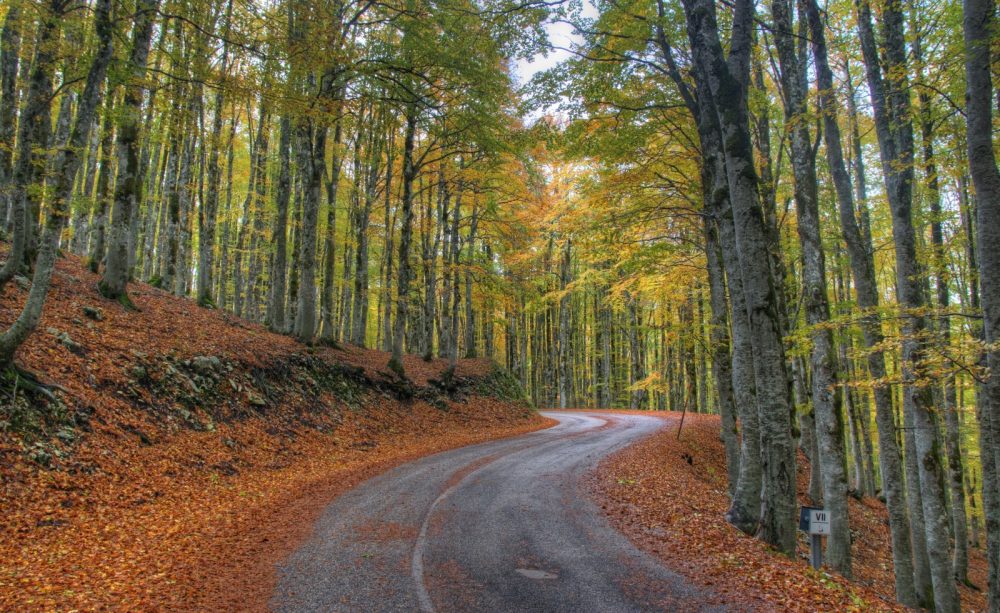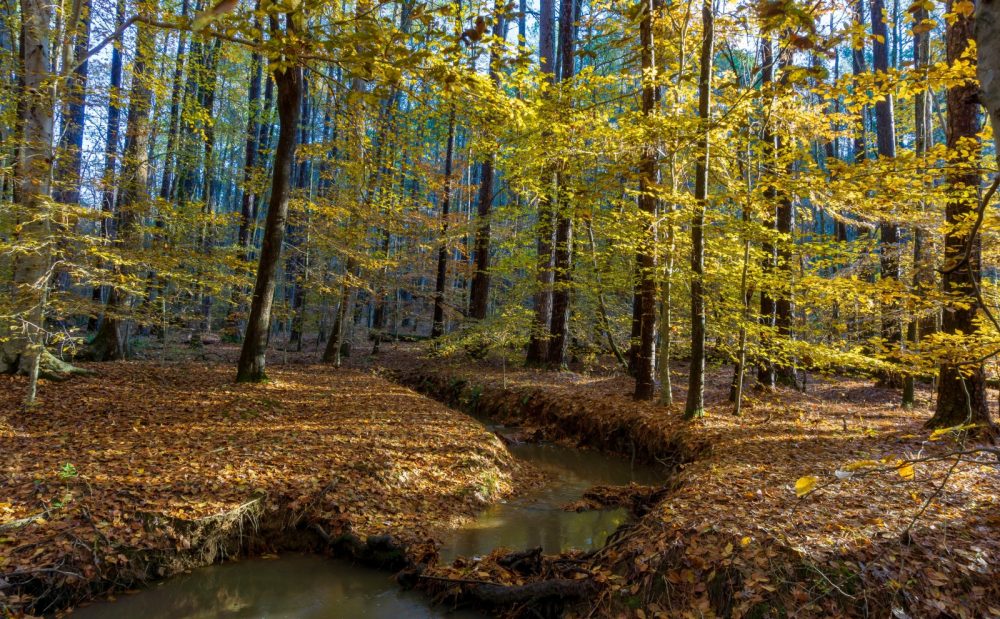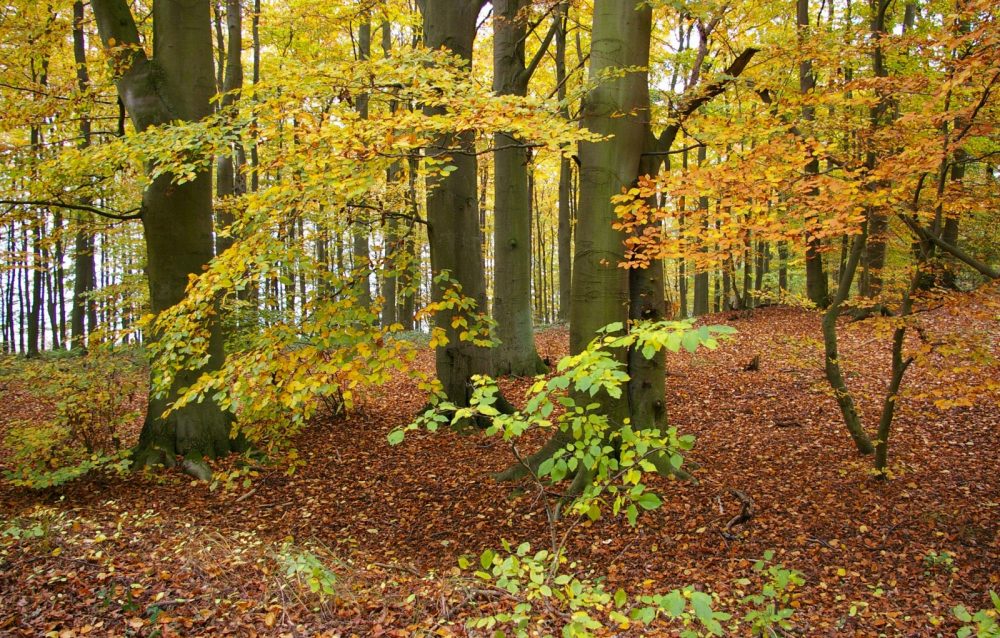Scientists and foresters are looking for forest problems’ solutions in research projects
The bark beetle calamity and the subsequent forest regeneration brings a large number of problems that neither foresters nor scientists did not met in history yet. Therefore, they significantly expand together the scope of research projects with new topics and non-traditional points of view on solving practical procedures in forest management. Here we present various selected points of interest.
 Scientists are both looking for and testing alternative species of native and introduced tree species and their populations, which could be applied as prospective part of the species composition of future forests. E.g., among these species it is possible mention grand fir, Norway spruce, Serbian spruce (Picea omorika), Scots pine, European larch, red oak, Douglas fir, European hornbeam, European beech, black poplar and white poplar, white birch, hornbeam elm, lindens, red yew and oaks. In provenance tests, there have been found a very good state of health and a significant increase in thickness in case of grand fir provenances at the age of 40 years. Grand fir significantly exceeds the other comparative tree species in terms of production, while the effect of drought on its growth has not been recorded.
Scientists are both looking for and testing alternative species of native and introduced tree species and their populations, which could be applied as prospective part of the species composition of future forests. E.g., among these species it is possible mention grand fir, Norway spruce, Serbian spruce (Picea omorika), Scots pine, European larch, red oak, Douglas fir, European hornbeam, European beech, black poplar and white poplar, white birch, hornbeam elm, lindens, red yew and oaks. In provenance tests, there have been found a very good state of health and a significant increase in thickness in case of grand fir provenances at the age of 40 years. Grand fir significantly exceeds the other comparative tree species in terms of production, while the effect of drought on its growth has not been recorded.
There have been also several research trials with introduced forest tree species potentially resistant to drought in the upland area affected by spruce withering, in Northern Moravia. Total area of these trials established at Forest District Vítkov is 4.32 ha, it is part of a larger calamity clearing area. A total of 28 species of introduced tree species provenances were planted. At the same time, the Catalog of suitable introduced tree species for cultivation in areas with a moisture deficit in the conditions of the hilly areas of the Czech Republic has been published, too.
As important research activity, it is possible to mention also research and conservation activities aimed to preservation of the red yew in the Protected Area Lužické hory Mts. The genetic variability of selected red yew populations is the subject of current research. The influence of habitat conditions on height and thickness growth of individuals in red yew plantations, there was confirmed in this research.
Among other activities, scientists pay also attention to the occurrence of forest ants in overgrown clearings. In the case of extensive overgrowth of bark beetle clearings with vegetation (e.g. brambles, reeds), the nests with ants disappeared. Woodpeckers hunt ants especially during autumn and in the beginning of winter. In the case of a milder winter, nests are not damaged by birds and they do not freeze and die.
 The second part of the book publication on small butterflies (Microlepidoptera) of Central Europe has been completed. As newly described were 53 species and 5 genera from 8 families of beetles and 1 species from the Hymenoptera group.
The second part of the book publication on small butterflies (Microlepidoptera) of Central Europe has been completed. As newly described were 53 species and 5 genera from 8 families of beetles and 1 species from the Hymenoptera group.
Scientists have described the most important pests affecting the health of pine forests in the Czech Republic, both in a specialized map with expert content and certified methodology. They prepared a specialized map based on historical data from 1964 to the present. This makes it possible „de novo“ to compare the risk of biotic harmful agents in individual areas with the occurrence of pine. The map informs forest owners and managers about the intensity of damaging of pine stands and thus draws attention to the most endangered areas with the occurrence of pine.
The certified methodology primarily provides forestry practice with methods of forest protection against traditional insect pests, as well as against new harmful bark and wood-destroying insect species. For practical purposes, the Czech names were also chosen of one domestic and two introduced species of insect pests, the bark beetle elongated for Orthotomicus longicollis, the slender grinder for Gnathotrichus materiarius and the black grinder for Xylosandrus germanus.
Scientists are implementing the project “Sustainable management in smallholder forests“. Their goal is to provide evidence for improving management in the forests of small owners. On the basis of current knowledge, they formulate and verify management procedures in the forests of small owners, including economic evaluation of their forests. They are preparing a methodology for management measures being diversified according to the property characteristic, recommendations for decision-making by the state forest administration, including proposal for adjusting the subsidy policy.
 As it also has been found, maintaining long crowns should be kept in young silver fir stands, while should not be unnecessarily removing viable individual trees from the stand sub-level. This is valid in an increased extent in mixtures where there is often fir in this sub-level. For all types of mixtures, the first silvicultural interventions must be carried out in a timely and active manner. Otherwise, the risk of loos mixed (non-dominant) tree species increases greatly.
As it also has been found, maintaining long crowns should be kept in young silver fir stands, while should not be unnecessarily removing viable individual trees from the stand sub-level. This is valid in an increased extent in mixtures where there is often fir in this sub-level. For all types of mixtures, the first silvicultural interventions must be carried out in a timely and active manner. Otherwise, the risk of loos mixed (non-dominant) tree species increases greatly.
The forest researchers found that the silvicultural interventions in the young preparatory birch stand at a height of 5 m led to the accumulation of the thickness increase of the loosened trees, further to the reduction of the growth of the slenderness quotient and to a significant slowing down of the shortening of the crowns of the loosened target trees.
When investigating the possibilities of reducing the impact of dry periods on spruce and pine stands, the forest researchers found that the upper soil horizon (-10 cm) showed higher values of soil moisture in the pine young stand without silviculture measures, while in the stand with silviculture treatments there was higher soil moisture in the deeper layer (-30 cm). After the removal of the spruce sub-level in the mature pine stand, the increased under-canopy precipitation did not result in increased soil moisture, but the remaining pines responded positively to this measure by increasing the thickness increase.
 The researchers also confirmed the beneficial amelioration effect of red oak on pine habitats. The chemistry of the top soil layers under red oak stands was more favourable than under pine stands. The presence of red oak and its nutrient-rich waste had a positive effect on the pH values and the sorption complex.
The researchers also confirmed the beneficial amelioration effect of red oak on pine habitats. The chemistry of the top soil layers under red oak stands was more favourable than under pine stands. The presence of red oak and its nutrient-rich waste had a positive effect on the pH values and the sorption complex.
Through extensive field investigations on permanent research trials, scientists have confirmed the economically and biologically effective possibilities of restoring calamity clearings with the use of preparatory tree species.
In the new research trials, the scientists registered a good potential for natural regeneration not only of preparatory tree species with a pioneering growth strategy. By evaluating the economic efficiency, there have been evidenced the possibilities of saving costs when using alternative methods of restoration of disaster forests (use of preparatory tree species, combined phased restoration).
The evaluation of microclimatic conditions in the preparatory stands showed a good ability of these stands to buffer climatic extremes.
Among current FGMRI research and practical activities, it is possible also to mention realization of research projects with the aim utilize specially selected vegetative variants of resistant (tolerant against emissions) Ore Mountains population of Norway spruce for their current use in the forest regeneration in the area of their origin.
Prepared by Ing. Jan Řezáč, FGMRI, rezac@vulhm.cz
